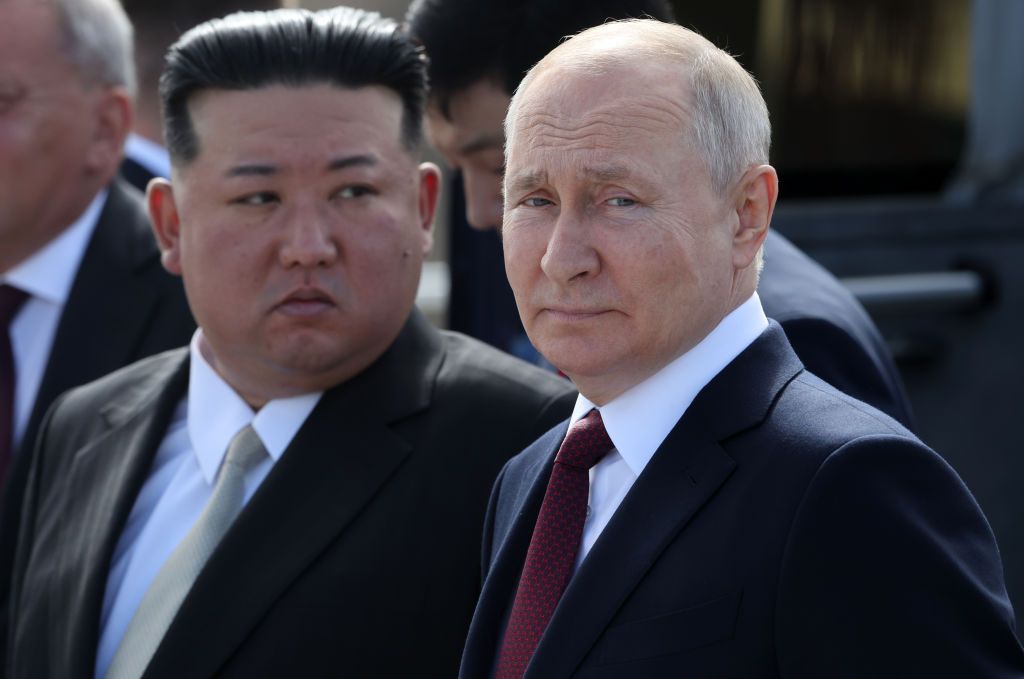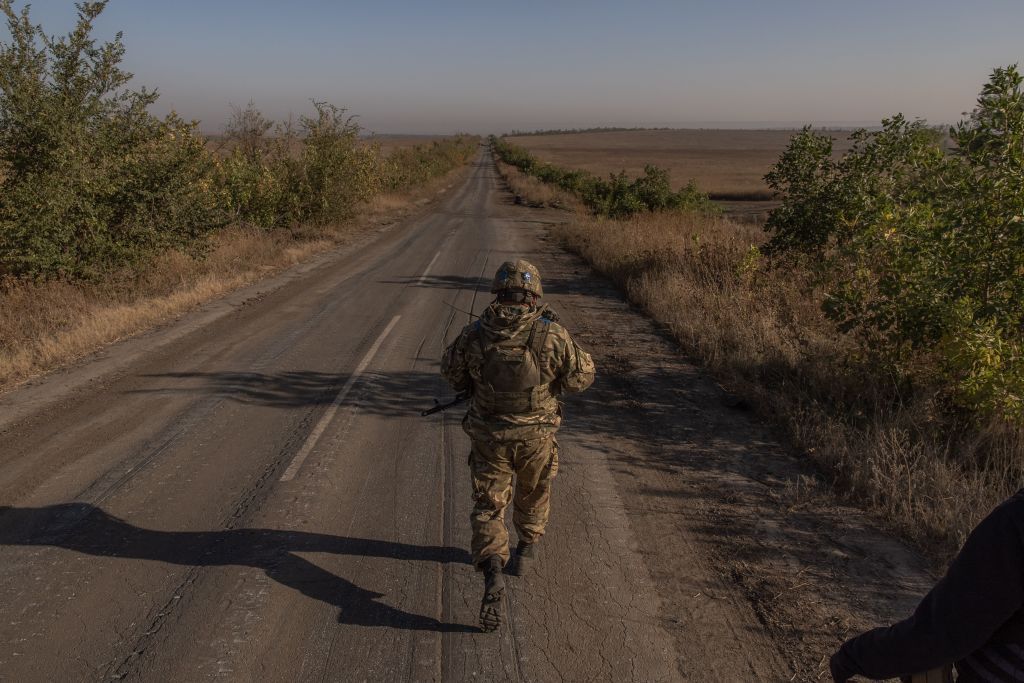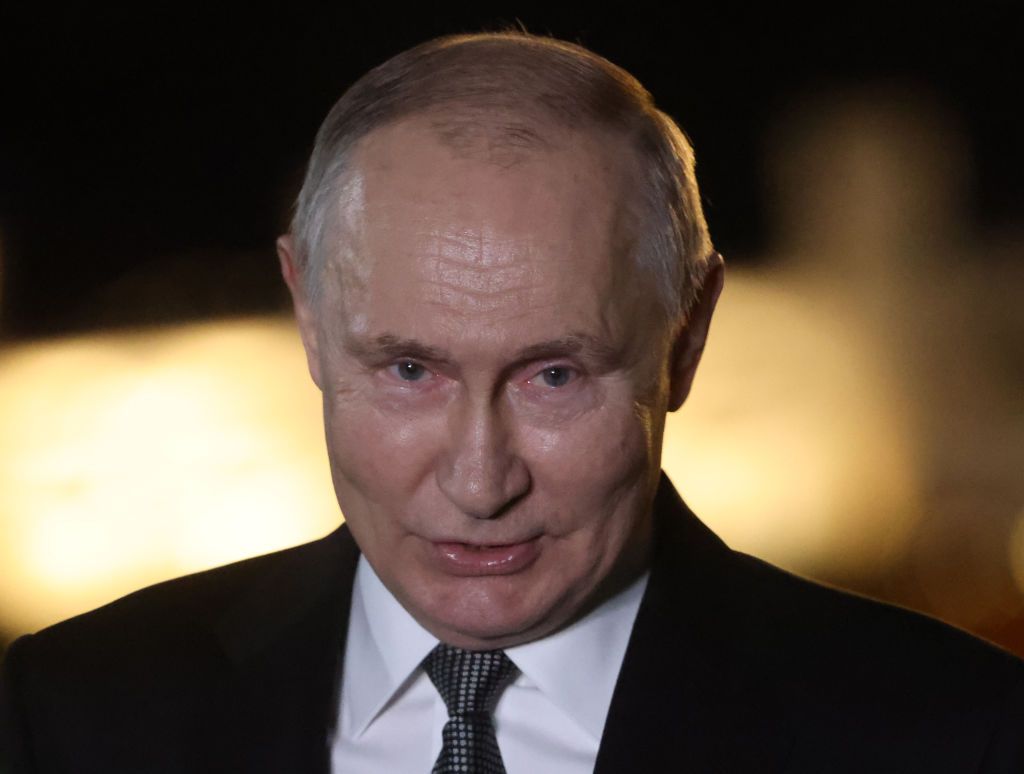Ukraine war latest: Russia reportedly receives over 1 million artillery rounds from North Korea

Key developments on Nov. 1:
- North Korea reportedly sends over 1 million artillery shells to Russia
- Ukrainian forces repel Russian attacks in 5 directions
- Military reports Russian planes drop ‘explosive objects’ on Black Sea shipping corridor
- Russian media: Wagner resumes recruiting as Russia's National Guard unit
Russia and North Korea have been growing closer in recent months as the Kremlin seeks to boost its arms capacities amid the ongoing invasion of Ukraine.
South Korean intelligence believes North Korea has sent over a million artillery rounds to Russia to boost its war efforts against Ukraine, the Associated Press reported on Nov. 1, citing a South Korean lawmaker who attended a closed-door briefing with intelligence officials.
North Korea sent the rounds via ships and other means of transport since early August, amounting to two months' worth of supplies, lawmaker Yoo Sang-bum, who sits in a parliamentary intelligence committee, said, with reference to the country's National Intelligence Service (NIS).
Along with the shipments, North Korea also has sent its advisers to instruct Russian officials on the proper use of munitions, Bloomberg reported, citing Yoo.
NIS believes that in return, Russia will likely provide North Korea with tech assistance, helping to launch the first North Korean military reconnaissance satellite, according to Yoo.
Russia's support could also extend to cooperation in conventional military capabilities, for example, by helping North Korea improve its aging aircraft, the lawmaker said.
North Korean dictator Kim Jong Un and Russian President Vladimir Putin met in Russia's Amur Oblast in September, reportedly to discuss Moscow's support for Pyongyang's space and missile technology programs.
According to Washington, the talks also addressed North Korean military aid to bolster Russia's war against Ukraine. The White House later said that North Korea had already delivered over 1,000 containers of military equipment and munitions by Oct. 13.
The U.S., Japan, and South Korea issued a joint statement on Oct. 25 condemning North Korea's provision of weapons to Russia.
On the battlefield
Russian forces launched four missile strikes, 59 airstrikes, and conducted 36 artillery barrages against Ukrainian forces’ positions and settlements, killing and injuring civilians over the past day, the General Staff of Ukraine’s Armed Forces said in its evening update on Nov. 1.
The military also said that Russia attacked Ukraine with three Kh-59 missiles and 20 Shahed loitering munitions. Ukrainian air defense downed three missiles and 18 kamikaze drones.
The situation in the south and east “remains difficult,” according to the report.
Over the last 24 hours, the Ukrainian Air Force struck Russian positions and air defense units, the military said.
Ukrainian artillery hit five Russian radar stations, two command posts, three anti-aircraft missile complexes, and 11 Russian artillery pieces, according to the report.
The military also recorded 43 combats along the front line that stretches from southern Kherson Oblast to northeastern Kharkiv Oblast.
Ukrainian forces repelled Russian attacks in five sectors: Kupiansk, Bakhmut, Avdiivka, Marinka, and Shakhtarsk axes.
Meanwhile, a Russian drone strike on the city of Nikopol in Dnipropetrovsk Oblast on the morning of Nov. 1 killed one and injured four, according to Governor Serhii Lysak.
Lysak later reported another attack on the area that injured one civilian in the Marhanets community.
The city of Nikopol lies at the mostly dried-up Kakhovka Reservoir, just across Russian-occupied Enerhodar and the Zaporizhzhia Nuclear Power Plant. It is a regular target of Russian attacks.
A Russian strike on the Kherson city center on the morning of Nov. 1 killed a female employee of the city military administration, the administration's head, Roman Mrochko, reported.
Russian forces also launched a rocket strike on a village in Zaporizhzhia Oblast's Komyshuvakha community on Nov. 1, killing a man, Governor Yurii Malashko reported.
The small town of Komyshuvakha lies less than 20 kilometers southeast of Zaporizhzhia and around 20 kilometers north of the front line.
The southern city of Kherson has suffered regular Russian strikes since its liberation in Ukraine's counteroffensive last fall. The city, with a pre-war population of 280,000, lies at the Dnipro River, not far from the Russian-occupied east-bank part of Kherson Oblast.
Russia mines civilian routes in Black Sea
Russian warplanes have dropped "explosive objects" along the likely route of civilian vessels in the Black Sea three times in the past 24 hours, Ukraine's Southern Operational Command reported on Nov. 1.
Russia is continuing to "terrorize civilian shipping routes in the Black Sea," it wrote in a Facebook update. Nonetheless, the route remains open under the surveillance of Ukraine's defense forces.
The comments came after back-and-forth reports on Oct. 26 about the closure of the temporary grain corridor.
Kyiv-based Barva Invest consultancy reported on Oct. 26 that Ukraine had temporarily halted the use of its new trade route in the Black Sea due to the potential threat from Russian warplanes and sea mines.
Infrastructure Minister Oleksandr Kubrakov quickly denied the reports, saying on X that “The information regarding the cancellation or unscheduled stoppage of the temporary Ukrainian corridor for the movement of civilian vessels from and to the ports of the Big Odesa is false.”
Big Odesa is a coastal area with three major seaports: Odesa, Chornomorsk, and Pivdennyi.
The new corridor’s suspension could have dealt yet another blow to Ukraine’s agricultural sector after the collapse in July of the Black Sea Grain Initiative. Ukraine set up its own trade route in August to move food exports out of its Black Sea ports near Odesa, defying Russian threats.
As of late October, Ukraine has managed to export nearly 700,000 metric tons of grain through the temporary corridor — a start, but a fraction of the more than 30 million metric tons of food commodities exported under the grain initiative.
Ukraine was shipping up to six million tons of grain monthly from its Black Sea ports before the start of Russia’s full-scale invasion in February 2022.
The route is not without risks, however. A Turkish cargo ship suffered minor damage from a mine 20 kilometers from the Romanian port of Sulina on the Black Sea on Oct. 5.
Meanwhile, in Russia
The Wagner Group has allegedly resumed recruiting in the Russian cities of Perm and Novosibirsk as a unit of Rosgvardia, Russia's National Guard, 59.ru and ngs.ru, local news outlets, reported on Oct. 31 and Nov. 1.
The group's recruiter told the Perm news outlet 59.ru that Pavel Prigozhin, the son of the deceased founder of Wagner, Yevgeny Prigozhin, now heads the unit.
"We recruit those who already have combat experience, including those who have already been members of the PMC (private military company)," the recruiter reportedly said.
Wagner has, however, abandoned its previous strategy to draw recruits from prisons, 59.ru reported, citing the recruiter.
A source within the mercenary unit reportedly told ngs.ru on Nov. 1 that the recruitment has been ongoing for "two or three days," noting that convicts and sick people are not accepted. Recruits are signing their contracts with Rosgvardia, not with Russia's Defense Ministry, the source emphasized.
The Kyiv Independent couldn’t independently verify the information.
The Russian investigative outlet iStories reported on Oct. 27 that Wagner began to merge into Rosgvardia. Incorporation of the notorious mercenary outfit followed talks between Rossgvardia officials and Pavel Prigozhin and Anton Elizarov, one of Wagner's commanders.
















